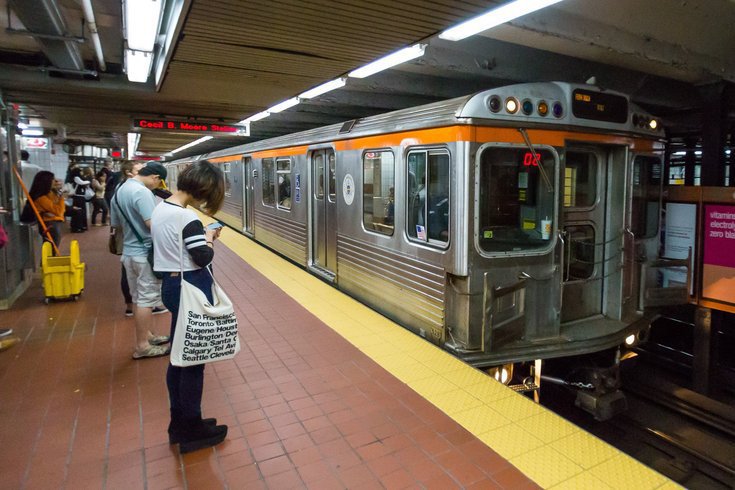
November 18, 2022
 Thom Carroll/for PhillyVoice
Thom Carroll/for PhillyVoice
A new SEPTA pilot program launching next year will test out a gun detection artificial intelligence software that uses existing surveillance cameras to spot people wielding firearms. The technology comes from Conshohocken-based ZeroEyes.
Beginning early next year, Philadelphia's subway platforms will be monitored for threats of gun violence using an artificial intelligence system that can identify firearms on surveillance feeds. SEPTA's board has approved a pilot program to deploy the technology suite developed by ZeroEyes, whose platform is used by the U.S. Department of Defense.
SEPTA will be the first major transit system in the country to test out ZeroEyes, whose machine learning solution has been embraced by public school districts and universities, Fortune 500 corporate campuses and other organizations in more than 30 states.
The technology will be utilized to watch for people openly carrying guns on the subway platforms of SEPTA's Market-Frankford and Broad Street Lines, which have been plagued by a rising number of armed robberies and several shooting incidents in recent years.
SEPTA has more than 30,000 surveillance cameras stationed throughout its system. ZeroEyes, which is based in Conshohocken, layers its proprietary software over SEPTA's camera feeds to identify individuals who are brandishing guns. The company touts a recognition speed of 3-5 seconds, giving law enforcement an immediate window to send officers to the scene.
ZeroEyes' camera feeds are monitored around the clock by former U.S. military and law enforcement specialists, who provide intelligence to police from the company's operations center. Reports given to authorities include the suspect's appearance, clothing, weapon and real-time location.
The technology does not use facial recognition and does not "receive, record, store or share videos or images of any person," SEPTA said Thursday.
The technology has garnered considerable press in recent months as cities around the U.S. work to combat the epidemic of gun violence that ramped up after the onset of the COVID-19 pandemic. CNN's Josh Campbell spoke with ZeroEyes Chief Operating Officer Rob Huberty earlier this year for a segment that gave a demonstration of how the software works.
ZeroEyes believes its technology can help avert mass shootings, improve police responses to gun crimes and potentially deter criminal activity.
“Our nation’s cities have been experiencing dramatic increases in violent gun-related crime, and we need more leaders like SEPTA who take proactive measures to protect the public,” ZeroEyes CEO and co-founder Mike Lahiff said. “Public transportation is a crucial lifeline in urban regions, and the millions of people who rely upon it have a right to feel safe. SEPTA’s progressive approach to the problem should set the industry norm; we hope to see other public transit providers follow suit in the near future.”
SEPTA spokesperson Kelly Greene said Thursday that transit systems in other cities are expected to implement similar technology in the near future, but SEPTA believes it will be the first to get a gun detection system up and running. The pilot is on track to begin in approximately two months. SEPTA did consult other technology companies that offer similar solutions, but decided that ZeroEyes' local presence would make for the best partnership.
The company was founded by a group of retired Navy SEALs who used hundreds of thousands of images and videos depicting guns to train its A.I. platform.
State laws permit legal gun owners to open carry on SEPTA buses, subways and trains as long as they have a concealed carry permit. ZeroEyes' technology will only pick up on a firearm and interpret it as a threat if the weapon is drawn. Greene said SEPTA does not plan to post signage explaining the ZeroEyes pilot at city subway stations at this time.
SEPTA has been under pressure to take more significant steps to address violent crime, which has become more common at a time when ridership remains at just 57% of the pre-pandemic level across the system. From 2019 to 2021, robberies and aggravated assaults at SEPTA facilities increased by 80%.
Last week, a 21-year-old man was shot to death aboard a Broad Street Line subway in the area of Fairmount Station in North Philadelphia. A 16-year-old boy allegedly attempted to rob the man and opened fire, striking him 11 times. The teen, who has since been charged with murder, was also shot in the arm when the man who was killed drew a weapon and fired back.
Two other shootings also occurred inside SEPTA's 15th Street Station within the last four months.
Longtime SEPTA Police Chief Thomas Nestel III abruptly retired in July amid mounting scrutiny over the dangerous state of SEPTA facilities. He was replaced in the interim by his second-in-command, Charles Lawson, who last month announced a new safety plan for the transportation system.
SEPTA's plan expands on the Safety, Cleaning, Ownership, Partnership and Engagement (SCOPE) program, which the transportation system launched last year. SCOPE focuses on challenges for vulnerable populations, as well as bolstering the transit police force's presence across the system. SEPTA has struggled to recruit new officers in recent years, but says it has increased uniformed police presence on trains.
SEPTA has also promoted the Transit Watch app, which allows riders to report concerns anonymously and discreetly.
“We appreciate the Board’s support for this pilot, and it is our hope that this new technology will be another tool we can use to keep our system safe,” SEPTA General Manager and CEO Leslie S. Richards said of the ZeroEyes' pilot. “If the program is successful, we will consider deploying ZeroEyes at other locations across the network.”